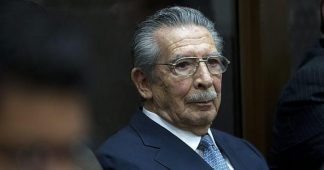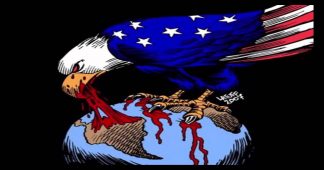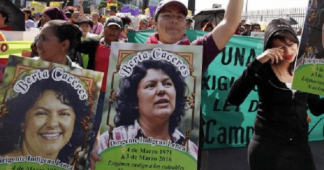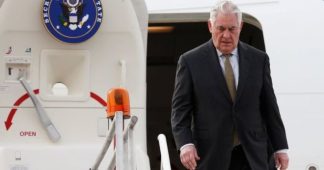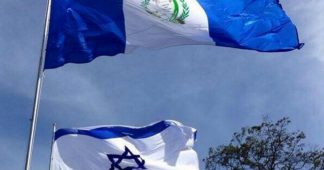Some stains can’t be hidden with a fresh lick of paint. At the Meliá Panamá Canal Hotel, a handful of tourists stretch out alongside a vast pool, margaritas within arms’ reach. A palm-fringed path leads to a secluded section of Gatun Lake, beyond the mighty Gatun locks that announce the entrance of the Panama Canal.
But in the hotel’s austere barrack-style architecture, the manicured lawns and the staff’s immaculately pressed uniforms, there is an eerie sense of the hotel’s previous incarnation as a military training facility. Between 1948 and 1984 it was home to the School of the Americas (SOA), the U.S. government’s Cold War training ground for Latin American military personnel.
“It was the School of Assassins and Dictators,” says Julio Yao, a retired professor and former adviser to the Panamanian government. “Most of the continent’s worst human rights abusers were graduates of the school.”
Today’s guest suites were once a place where classes in torture and anti-communism were held, and the resort’s tropical surroundings made it ideal for jungle commando training. Its students included the most notorious right-wing despots and paramilitary leaders in the continent’s history. As pressure mounts for regime change in Venezuela, the SOA is a still-standing reminder of one reason U.S. intervention may be viewed with suspicion by Latin Americans. The Lima Group, consisting of 13 Latin American nations plus Canada, has been a vociferous critic of President Nicolás Maduro’s regime … but, with the exception of Colombia, its members roundly reject a U.S. show of force to remove him.
“Closing [the SOA] down — along with other U.S. military bases in Panamanian territory — was a principal goal of our negotiations with the Americans,” says Yao, who served as an adviser to Gen. Omar Torrijos, the Panamanian national hero whose 1977 treaty with President Jimmy Carter resulted in Panama gaining sovereignty of the interoceanic canal and the closure of American military bases.
In 1984, the SOA moved to Fort Benning in Georgia, but the school’s past deeds continue to echo into the 21st century. It seems that with every release of classified documents, and with every exhumation of massacred victims, new crimes are laid at the feet of graduates of the SOA.
In February, forensic teams continued to dig for the remains of victims in El Mozote, El Salvador, where more than 900 civilians — many of them children — were slaughtered by the Atlacatl Battalion … a killing squad formed and trained at the SOA. Elsewhere in Central America, SOA graduates included Honduras Battalion 3-16, responsible for the kidnap, torture and murder of 184 civilians, and Efraín Ríos Montt, the Guatemalan general and dictator convicted of the genocide of indigenous peoples in 2013.
Meanwhile, the release of classified documents in recent years has proved beyond doubt the collusion of Southern Cone governments in the application of state-backed terror against political opponents. An estimated 30,000 people were killed or disappeared under the Argentine military rule of 1976–83. One head of state, Leopoldo Galtieri was an SOA alumnus, as was Bolivian tyrant Hugo Banzer, whose torture chambers in the basement of the Ministry of the Interior were uncovered in 2009. Chile’s Augusto Pinochet never attended the school, but many of those responsible for the worst human rights abuses of his regime did.
“WHEN PRESIDENT DONALD TRUMP TELLS A MIAMI CROWD THAT “THE DAYS OF SOCIALISM AND COMMUNISM ARE NUMBERED NOT ONLY IN VENEZUELA BUT IN NICARAGUA AND IN CUBA AS WELL,” IT STIRS PAINFUL MEMORIES AND RESENTMENTS.”
The U.S. government has long claimed that the SOA brought professionalism to Latin American armies and stressed the school’s late-stage introduction of classes on human rights and democracy. Abuses would have been far worse but for this training, they argue. More than 60,000 soldiers passed through the school — some taking classes as mundane as Jeep maintenance — and a study by Katherine McCoy found that only 1.3 percent of graduates became human rights abusers.
That did not stop the SOA from becoming symbolic of Latin American distrust of U.S. military intervention, according to Greg Weeks, a professor of Latin American politics at the University of Charlotte and author of an influential study of the SOA. “The school gave its students the green light to do certain things in their own country,” he says. “For many, it symbolized the negative impacts of U.S. foreign policy in the region.”

That past has left many Latin Americans highly suspicious of U.S. intervention in the region. When President Donald Trump tells a Miami crowd that “the days of socialism and communism are numbered not only in Venezuela but in Nicaragua and in Cuba as well,” it stirs painful memories and resentments. So too does his employment of Elliott Abrams, a man heavily involved in U.S.-Central American policy in the 1980s, as Venezuelan attaché.
“The way the U.S. is handling the situation is a PR disaster,” says Weeks. “It’s taking the worst parts of the Cold War and setting them in Venezuela.”
The SOA was similarly counterproductive, according to Roberto Díaz Herrera, a senior Panamanian general who twice attended infantry and jungle commando training courses at the school. “It was considered an honor to attend the SOA, but the school taught a primitive anti-communism and produced unthinking soldiers,” he says. “That was a good result for Washington at the time, but it had a boomerang effect; it just created more popular anger with the U.S. and the dictators.”
In 1987, Díaz Herrera went public with revelations about the extent of corruption, vote rigging and drug trafficking at the heart of Panama’s U.S.-supported military regime. Two years later, the U.S. military dropped two infantry divisions on the country, wrenching back control of the strategically important nation and tossing the wayward dictator in jail. That dictator was Manuel Noriega. He was a graduate of the School of the Americas.

